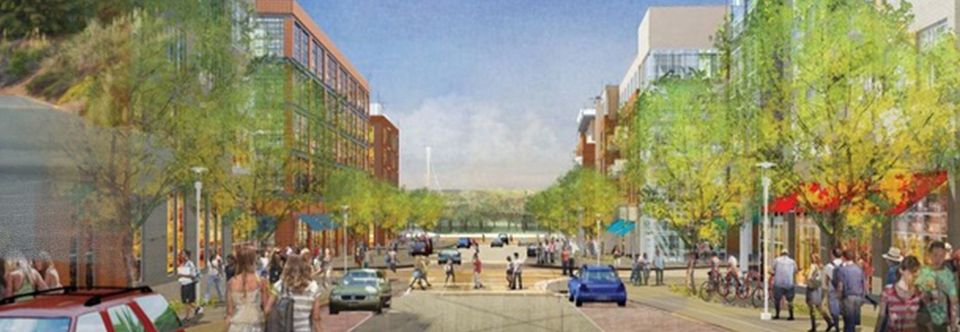The future of transit in new suburbia
 The urbanisation of America continues to role on and not just within cities but also out into the suburbs writes Leigh Gallagher of City Lab. Like in many Australian cities a vast majority of urbanisation in the US is now being undertaken within the depths of “car dependant” suburbia at the peripheries of large cities and regional centres. Whilst developers promote a sense of community, walkability and access to “the main street” the majority of residents in these areas still need car access to commute to work or run substantial errands.
The urbanisation of America continues to role on and not just within cities but also out into the suburbs writes Leigh Gallagher of City Lab. Like in many Australian cities a vast majority of urbanisation in the US is now being undertaken within the depths of “car dependant” suburbia at the peripheries of large cities and regional centres. Whilst developers promote a sense of community, walkability and access to “the main street” the majority of residents in these areas still need car access to commute to work or run substantial errands.Contrary to the belief of many transit purists that “if you are not removing the car, you’re not urbanising the suburbs”, Gallagher argues that these urban developments are transformative for cul-de-sac transplants and still represent an important step even if the transport issues are not fully resolved and I tend to agree.
The simple fact is the majority of suburban development in both Australia and the US has been undertaken within the last 50-60 years, in areas with little to no access to public transport and reinventing them by building rail transit is quite difficult. It is challenging for a number of reasons – density, geography and cost. Unlike older suburbs, new suburbs are not as capable of being efficiently linked by rail routes, thus the economics of creating these links become incredibly challenging without significant subsidies.
While this debate continues there have been some emerging approaches to the transit problem. Not surprisingly Silicon Valley is leading the way with Google partnering with GM on a pilot car sharing service that will give its employees’ access to 50 electric cars that are linked to a mobile app that matches drivers and cars for their morning and evening commute. Mercedes Benz is trailing “Boost by Benz” that transports children around to their various extra circular activities in brightly coloured vans and GM and Toyota have recently stated they would start giving discounts on new cars to Uber Drivers.
Dublin, Ohio is actively seeking to create a rich and robust non-motorised environment through its recent rezoning of 1100 acres to create the Bridge Street District, a mixed use urban environment complete with a $14 million pedestrian bridge. Other towns within Ohio are reinventing bus networks on the premise that the bus today is a high tech, clean, energy efficient mode of transport that can carry many passengers, go anywhere and is much cheaper than rail.
However, the simplest solution to this issue, as Gallagher suggests is developing New Suburbia off the back of Old Suburbia by seizing the opportunity to build updated and urbanised housing stock in areas where transit already exists. She goes on to discuss that inner ring, transit-oriented suburbs of many American Cities are going to be the next “big thing” and insists that they have already started to rise as a separate entity from car oriented suburbs.
For the full article and further information regarding this topic please visit http://www.citylab.com/housing/2014/06/what-transit-will-actually-look-like-in-new-suburbia/372580/


Comments
Post a Comment